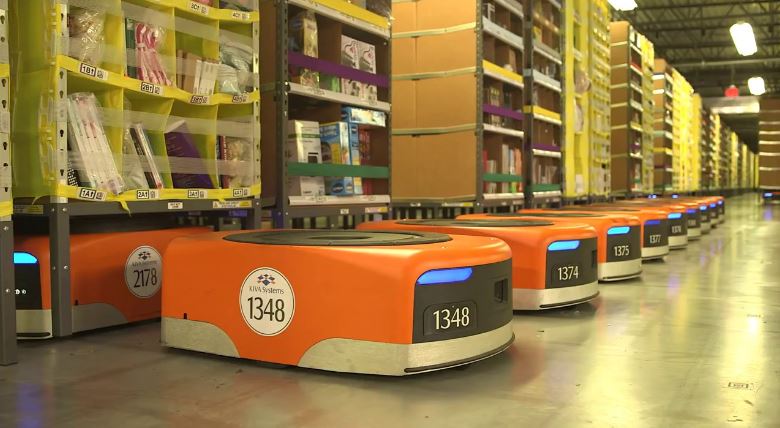Automation has always provided immeasurable benefits to businesses and economies alike. It paved the way for the industrial revolution and the rapid rise of production plants. These days, a new type of automation is making its presence felt – intelligent warehouse robots. These robots have started changing the way warehouses and eCommerce does their business.
Robots are already being used in a lot of warehouses. Their tasks are usually to bring boxes or shelves of products to an employee who will then pack the orders into boxes in preparation for shipping. So far, the intricacy of sorting through tens of thousands of products has made the idea of using robots for packing orders unrealistic. However, that might soon change, as reports have indicated that the newer warehouse robots are now more flexible.
Rise of the Warehouse Robots
It comes as no surprise that Amazon is leading the charge in the use of robots in their warehouses. After all, the eCommerce giant prides itself on its fast and efficient delivery system, something that robotic automation undoubtedly helped with. Amazon started using robots from Kiva Systems in 2011 before buying the company a year later. Now there are more than 15,000 Kiva robots in Amazon’s warehouses, where they are used to bring products to an employee for picking and packing. This significantly cuts down the time an employee would take to navigate the warehouse and look for the product.
Kiva Systems, which is now known as Amazon Robotics, paved the way for companies like Fetch Robotics and GreyOrange to develop their own line of warehouse robots. The former developed the Fetch and Freight system, with the Fetch robots picking items from a shelf while the Freight component moves the product through the warehouse. Meanwhile, GreyOrange developed a Butler robot that helped merchants like Flipkart and Jabong run their operations smoothly by moving through their warehouses to collect high-volume and high-mix orders set to be shipped.
Advantages of Robotics
A 2015 report on the rise of the warehouse automation market discussed the growth of eCommerce and its effects, particularly on the workforce. Picking and packing robots can provide a distinct advantage to retailers. Unlike their human counterparts, companies don’t have to provide sick days, vacation leaves, health insurance or lunch breaks to robots. No training is required for robots and they can be utilized 24/7, a feature that comes in handy during busy holiday seasons. Instead of having to hire extra warehouse workers to cope with massive orders, robots can pick up the bulk of the work while substantially reducing costs. Plus, it requires minimal human interaction.
Analysts have also projected that robots will cost the company less in the long run. For instance, one of the more advanced Fetch warehouse robots is priced anywhere from $35,000 to $100,000. However, that price will certainly go down as more units are sold. It’s estimated that in about five years, one robot will be less expensive to maintain that an employee with a $15 minimum wage and benefits.
Fears About Robots
The price of fully automating a warehouse is a major stumbling block, especially for small retailers or medium-sized businesses. Companies would also have to deal with the fall-out and anger from employee groups and labor unions who are worried that warehouse robots will cost them their jobs.
Robotics and the Future of eCommerce
Automation will undoubtedly play a big part in companies getting a competitive boost in a bustling market. Consumers are getting more demanding, making speed a key consideration in eCommerce. This means that companies need to figure out how to cut down their shipping time and ensure that customers receive their orders as soon as possible. Amazon’s claim of same day delivery has also put pressure on itself and other companies, as well as raising expectations among consumers.
The emergence of newer and smarter warehouse robots can cut down on the time and effort needed to pick orders, pack and ship parcels, scan and update inventory, arrange existing items on shelves or add new ones and complete other tasks.
Robotics companies are already working to meet the demands of eCommerce. One mystery retailer has been reported to have invested in a picking robot from robotics company Kuka while RightHand Robotics has begun testing the capabilities of its picking robots at another unnamed retailer’s warehouse. Meanwhile, Amazon continues to pour money into robotics – hosting robotic competitions and funding research – in a bid to further develop this technology. If the company continues this course, experts predict that it might accomplish full automation in less than a year.
When picking and packing robots are finally utilized, companies like Amazon can cut down the cost and time of fulfilling orders by 1/5, thereby push their profits higher. However, it might also push out an immense number of the human employees out of the workforce, further fueling the disdain and anger people feel against the use of these machines.
[Image via YouTube]
